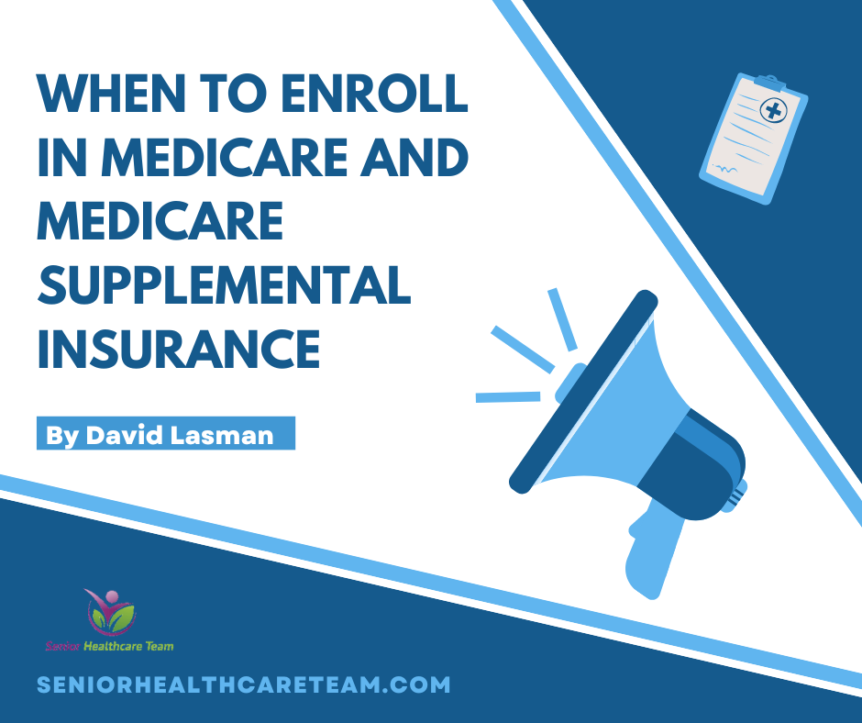When does Medicare coverage begin?
Medicare coverage starts based on when you sign up and which sign-up period you’re in.
Your first chance to sign up (Initial Enrollment Period)
Generally, when you turn 65. This is called your Initial Enrollment Period. It lasts for 7 months, starting 3 months before you turn 65, and ending 3 months after the month you turn 65.
What happens if my birthday is on the first of the month?
- Your 7-month period starts earlier. It starts 4 months before you turn 65 and ends 2 months after the month you turn 65. Generally, your Medicare coverage starts the first day of the month before you turn 65.
- Example: Your birthday is June 1st. When you turn 65, your Initial Enrollment Period is February-August. If you sign up in February, March, or April, your coverage starts May 1st.
When your coverage starts
The date your coverage starts depends on which month you sign up during your Initial Enrollment Period. Coverage always starts on the first of the month.
If you qualify for Premium-free Part A: Your Part A coverage starts the month you turn 65. (If your birthday is on the first of the month, coverage starts the month before you turn 65.)
Part B (and Premium-Part A): Coverage starts based on the month you sign up:
- If you sign up before the month you turn 65, coverage starts the month you turn 65
- If you sign up the month you turn 65, coverage starts the next month
- If you sign up 1 month after you turn 65, coverage starts 2 months after you sign up
- If you sign up 2 or 3 months after you turn 65, coverage starts 3 months after you sign up
What if I have a Health Savings Account (HSA)?
To avoid a tax penalty, you and your employer should stop contributing to your HSA at least 6 months before you apply for Medicare. This is because:
- If you’re 65 or older, your Part A coverage will start up to 6 months back from the date you sign up for Medicare or apply for benefits from Social Security (or the Railroad Retirement Board).
- You’re not eligible to make contributions to your HSA after you have Medicare.
If your Medicare Part A coverage overlaps when you made contributions, you’ll have to pay a tax penalty.
You can withdraw money from your HSA after your Medicare coverage starts to help pay your share of costs (like deductibles, premiums, coinsurance or copayments).
If you have a Health Savings Account (HSA) with a High Deductible Health Plan (HDHP) based on your or your spouse’s current employment, you may be eligible for a Special Enrollment Period to sign up for Part B without penalty.
When can I enroll in Medicare?
Between January 1-March 31 each year (General Enrollment Period)
You can sign up between January 1-March 31 each year. This is called the General Enrollment Period. Your coverage starts July 1. You might pay a monthly late enrollment penalty, if you don’t qualify for a Special Enrollment Period.

Special Situations (Special Enrollment Period)
There are certain situations when you can sign up for Part B (and Premium-Part A) during a Special Enrollment Period without paying a late enrollment penalty. A Special Enrollment Period is only available for a limited time. If you don’t sign up during your Special Enrollment Period, you’ll have to wait for the next General Enrollment Period and you might have to pay a monthly late enrollment penalty.
Special situations include:
You have health insurance through a job and still working — You can sign up for Part A and Part B any time as long as:
- You have group health plan coverage.
- You or your spouse (or a family member if you’re disabled) is working for the employer that provides your health coverage.
You also have 8 months to sign up after you or your spouse (or your family member if you’re disabled) stop working or you lose group health plan coverage (whichever happens first).
Your 8-month Special Enrollment Period starts when you stop working, even if you choose COBRA or other coverage that’s not Medicare.
Situations that don’t qualify for a Special Enrollment Period:
- Your COBRA coverage or retiree coverage ends. If you miss your 8-month window when you stopped working, you’ll have to wait until the next General Enrollment Period to sign up.
- You have or lose your Marketplace coverage.
- You have End-Stage Renal Disease (ESRD).
When Is Open Enrollment for Medicare Supplement Plans?
You’re generally eligible for Medigap coverage if you’re enrolled in Original Medicare, Part A and Part B.
The six-month window (which is your initial Medigap Open Enrollment Period) is the best time to buy a Medigap policy. It begins on the first day of the month in which you’re both 65 or older and enrolled in Medicare Part B. Some states have additional Open Enrollment Periods, including ones for people under 65.
Once your Medigap Open Enrollment Period passes, you may not be able to enroll in a Medicare Supplement insurance plan as easily if you’re doing so for the first time. If you’re already enrolled in a Medigap plan, you may not be able to switch plans with guaranteed issue (except in certain situations). Without guaranteed-issue rights, you may be subject to medical underwriting and charged higher premiums based on your health status. Insurance companies can also deny you coverage if you have health problems. It’s usually more difficult to find Medicare Supplement insurance coverage after your Medigap Open Enrollment Period has passed if you have disabilities or pre-existing conditions; even if you can find a Medigap plan that will accept you, your premium costs may be higher.
Other situations when you may have guaranteed-issue rights
There are some situations when you may still be able to enroll in a Medicare Supplement insurance plan with guaranteed issue. Those situations may include, but aren’t limited to:
- Your Medigap insurance company goes bankrupt or misled you.
- Your Medigap coverage ends through no fault of your own.
- You’re enrolled in Original Medicare and an employer-sponsored group plan, and your employer coverage is ending.
- You’re enrolled in a Medicare SELECT plan (a type of Medigap plan that uses provider networks), and you move out of your plan’s service area.
- You’re enrolled in a Medicare Advantage plan and move out of the plan’s service area, or your Medicare Advantage plan leaves the Medicare program.
- You enrolled in a Medicare Advantage plan at age 65 when you were first eligible for Medicare Part A, but changed your mind within the first year and want to return to Original Medicare.
- You dropped your Medigap plan to enroll in a Medicare Advantage plan for the first time, but changed your mind within the first year and want to return to Original Medicare.
Do you have questions about your rights to Medigap coverage, or would you like help finding Medicare Supplement insurance plans that may work for you? Contact Medicare “Dave” to get personalized assistance today!
Now that you’re getting ready to sign up for Medicare you’ll probably want to learn more about how much it could cost. This article should be the next thing you read: 9 Factors That Impact Your Medicare Supplement Rates
By David Lasman – “Ask Medicare Dave” | President – Senior Healthcare Team
wwww.SeniorHealthcareTeam.com | 866-333-7340
Selecting the right healthcare plan through Medicare can be overwhelming and downright stressful. Senior Healthcare Team is a nationwide resource that provides guidance and support about Medicare to seniors at no cost to them and helps them to choose the most suitable insurance plan tailored to their specific needs and budget. Our goal is to educate and empower our clients to make the best decisions regarding their healthcare and clear up the confusion of Medicare. At Senior Healthcare Team, we aren’t partial to any one insurance company. Our loyalty is to our clients and our mission is to provide them with the best healthcare options at the very lowest cost.

